Perfectly poised: Richard Meier’s Douglas House gains historic status
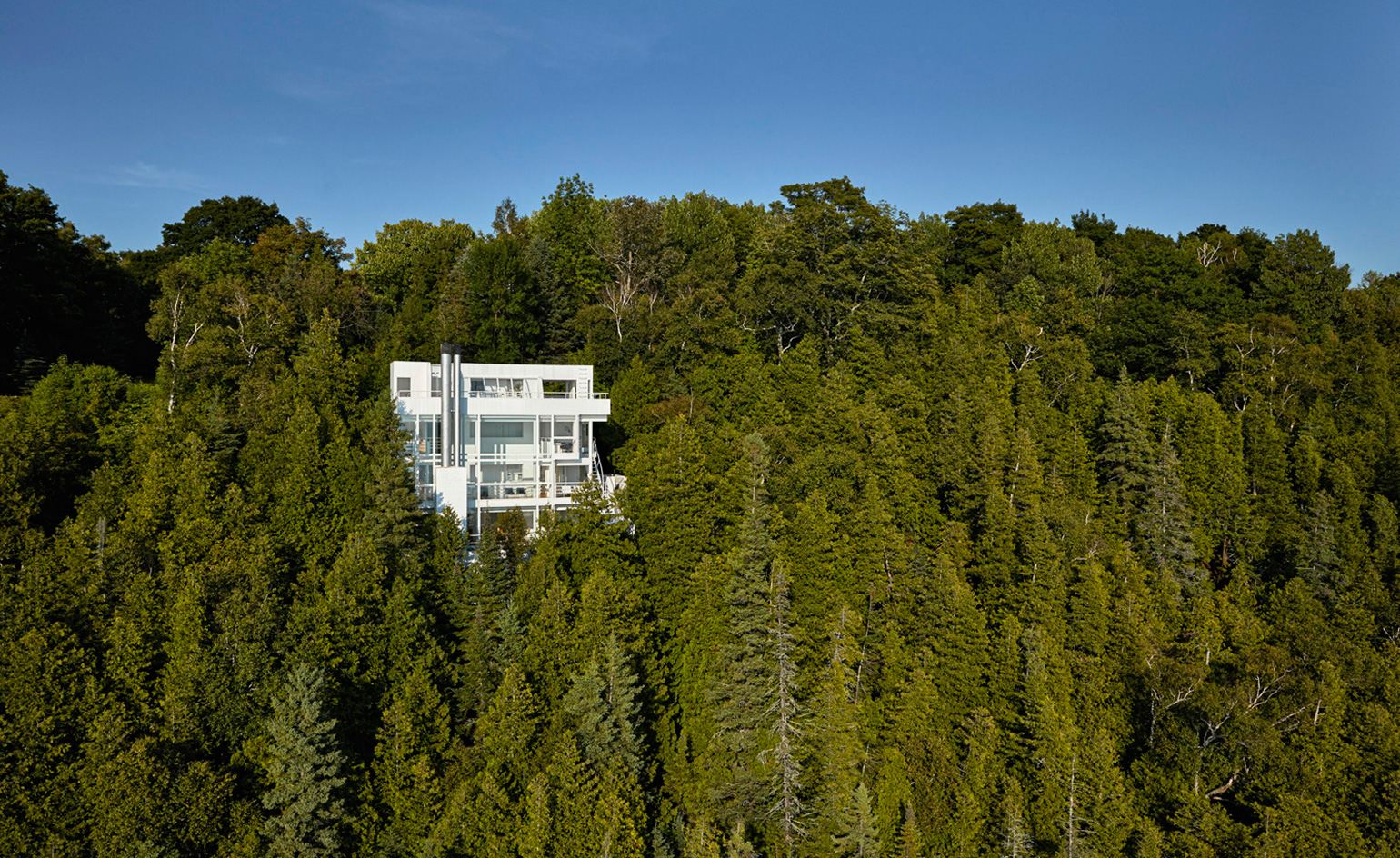
'Usually when people enter a house, they expect the outside to be brought in, but in the Douglas House, the opposite occurs: you are transported outside, over the lake and into the trees. Visitors all depart with an experience they’ve never had before,' says Richard Meier, of his Lake Michigan masterpiece. Stitched onto the sharply gradiated slope of Harbor Springs, Meier's Douglas House is five storeys of architectural drama. Now, it has been given protected status, as one of the homes on the National Park Service's country-wide register of historic places.
But it nearly didn't get built at all. 'One day, I received a letter from a Mr and Mrs James Douglas,' explains Meier. 'They were enquiring if I would sell them the blueprints of the Smith House.' While Meier was not prepared to sell the drawings, he was willing to design a house for them along similar lines. They accepted, and Meier started creating a home for a site that they had purchased in northern Michigan. As it happened, the developer who had sponsored the site insisted on reviewing the design of any house that would be built on it. 'He asked me to submit photographs of my work, whereupon he immediately refused to permit a house designed by me since it did not have the prerequisite classic pitched roof. To my delight, the Douglases responded to this impasse by promptly selling the plot and looking for another site, and that was the beginning of a very gratifying collaboration.'
From here, Douglas House, as it became known, took shape. Similar to Smith House in colour and materials (wood frame, steel columns, glass), the new structure differs in its architectural make-up, due to the sheer gradient of the slope it clings to. The home is entered at roof level, where stunning westerly views are framed by stainless-steel smokestacks, and enjoyed by a roof deck stretching the length of the building. Lower levels are accessed by dizzying external staircases, which appear to levitate on the landscape. The house's five distinct levels are traced in the mullions of the glazing, reflecting the lines of the shoreline, lake and the distant horizon.
Now, thanks to its new status on the National Register, this residential rarity will be preserved to impress future generations – pitched roof or otherwise. 'We are deeply honoured by this historic distinction of the Douglas House,' Meier concludes. 'With all of the changes that are taking place in the world today, it is important that architecture continues to move us aesthetically, as great architecture always has.'
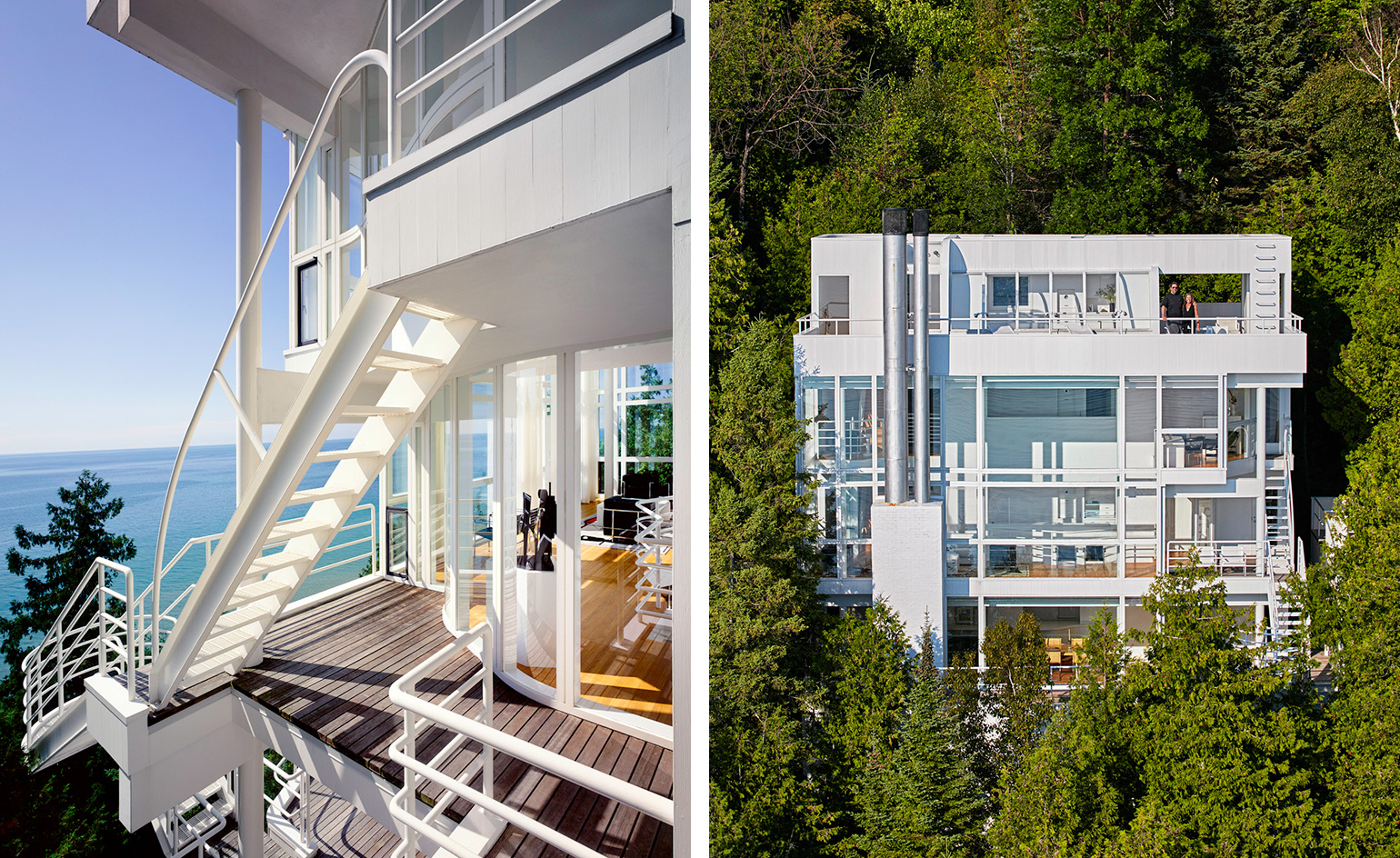
Meier explains, 'Usually when people enter a house, they expect the outside to be brought in, but in the Douglas House, the opposite occurs: you are transported outside, over the lake and into the trees. Visitors all depart with an experience they’ve never had before.'
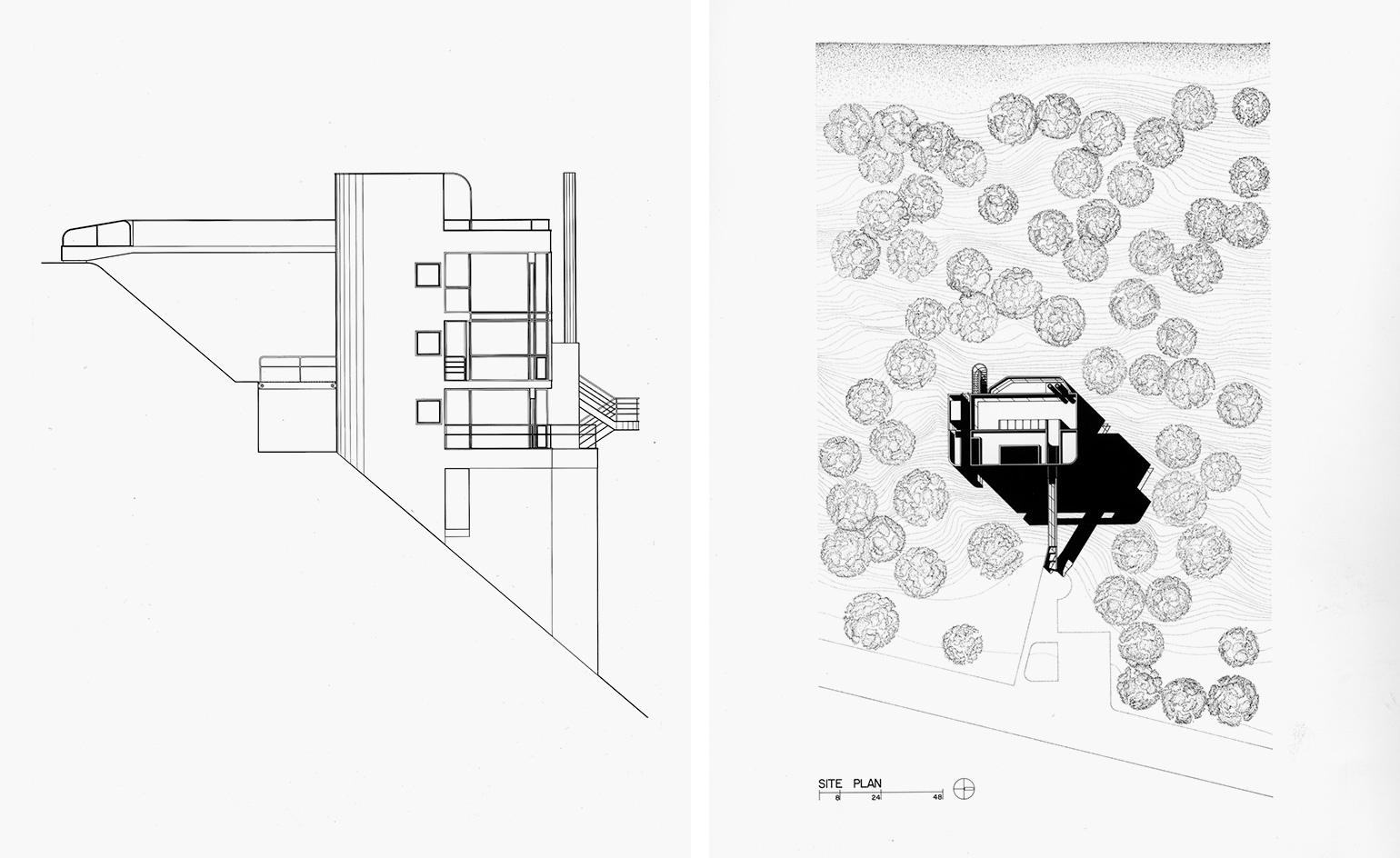
'One day, I received a letter from a Mr and Mrs James Douglas,' explains Meier. 'They were enquiring if I would sell them the blueprints of the Smith House.' While Meier was not prepared to sell the drawings, he was willing to design a house for them along similar lines.
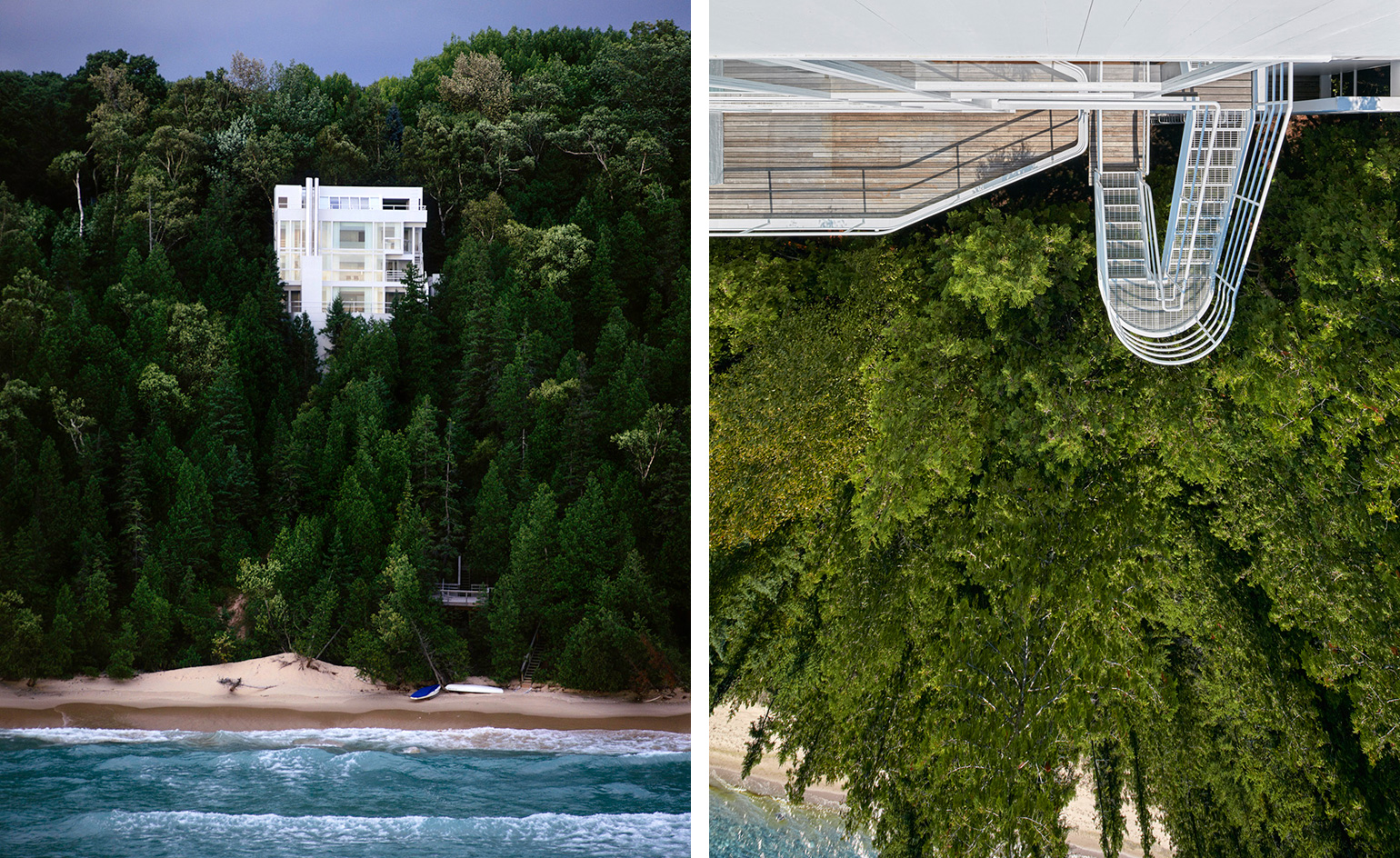
Similar to Smith House in colour and materials (wood frame, steel columns, glass), the new structure differs in its architectural make-up, due to the sheer grading of the slope it clings to.
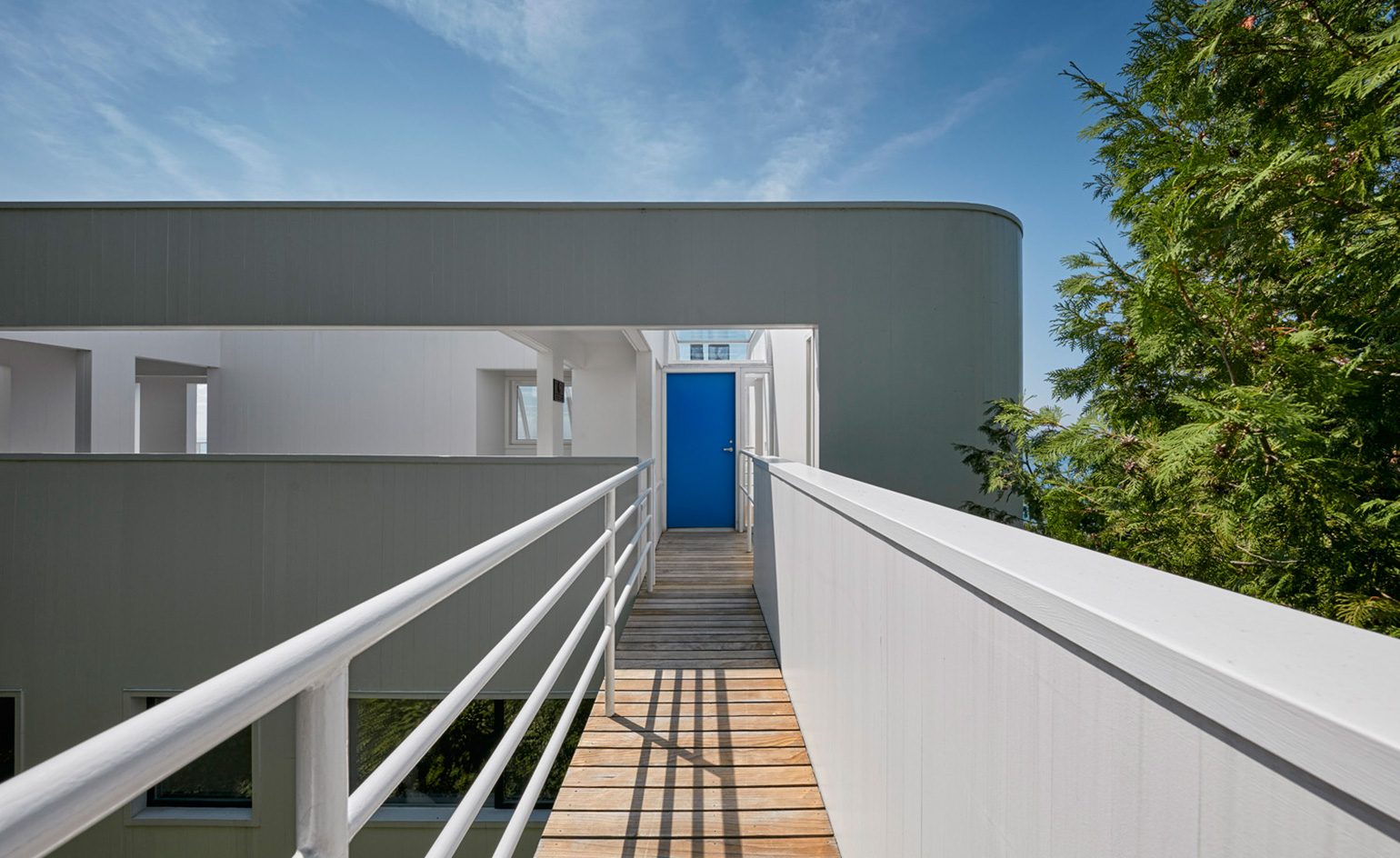
The house is entered at roof level, where stunning westerly views are framed by stainless-steel smokestacks, and enjoyed by a roof deck stretching the length of the building.
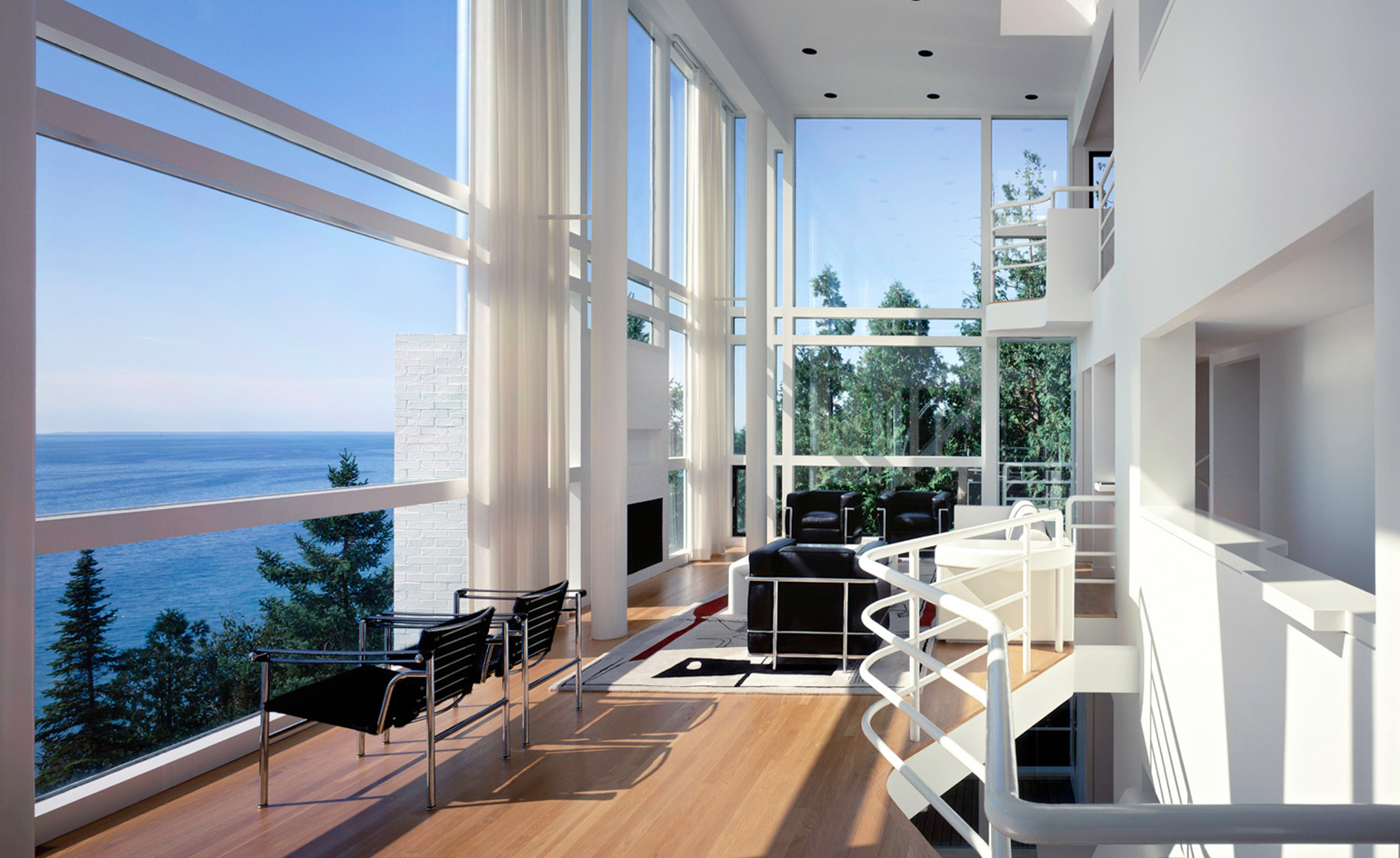
The house's five distinct levels are traced in the mullions of the glazing, reflecting the lines of the shoreline, lake and the distant horizon.

Meier concludes, 'With all of the changes that are taking place in the world today, It is important that architecture continues to move us aesthetically, as great architecture always has.'
INFORMATION
For more information, visit the Richard Meier & Partners Architects website
Receive our daily digest of inspiration, escapism and design stories from around the world direct to your inbox.
Elly Parsons is the Digital Editor of Wallpaper*, where she oversees Wallpaper.com and its social platforms. She has been with the brand since 2015 in various roles, spending time as digital writer – specialising in art, technology and contemporary culture – and as deputy digital editor. She was shortlisted for a PPA Award in 2017, has written extensively for many publications, and has contributed to three books. She is a guest lecturer in digital journalism at Goldsmiths University, London, where she also holds a masters degree in creative writing. Now, her main areas of expertise include content strategy, audience engagement, and social media.
-
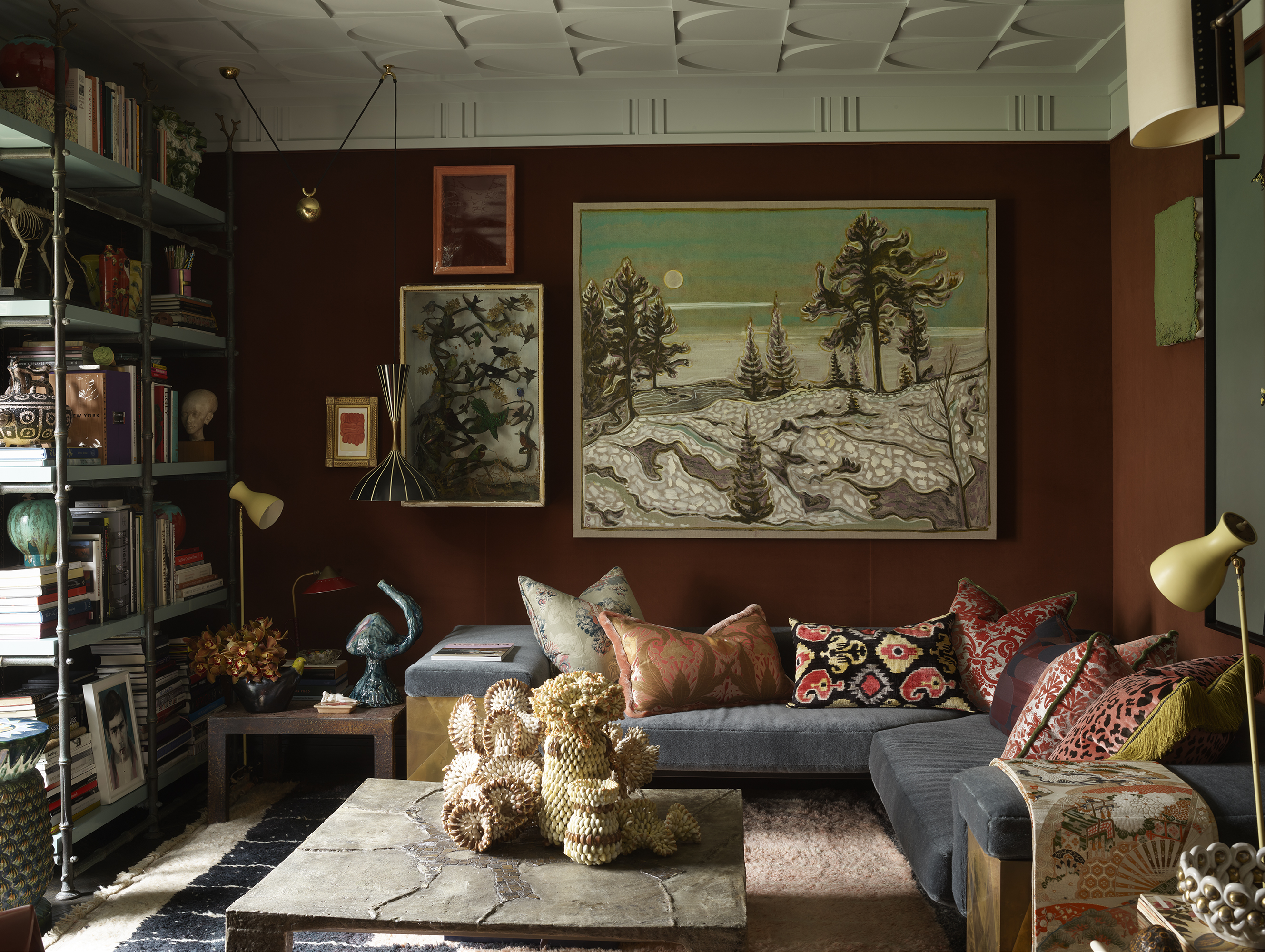 This designer’s Shoreditch apartment is ‘part grotto, part cabinet of curiosities’
This designer’s Shoreditch apartment is ‘part grotto, part cabinet of curiosities’The apartment serves as Hubert Zandberg’s ‘home away from home’, as well as a creative laboratory for his design practice. The result is a layered, eclectic interior infused with his personality
-
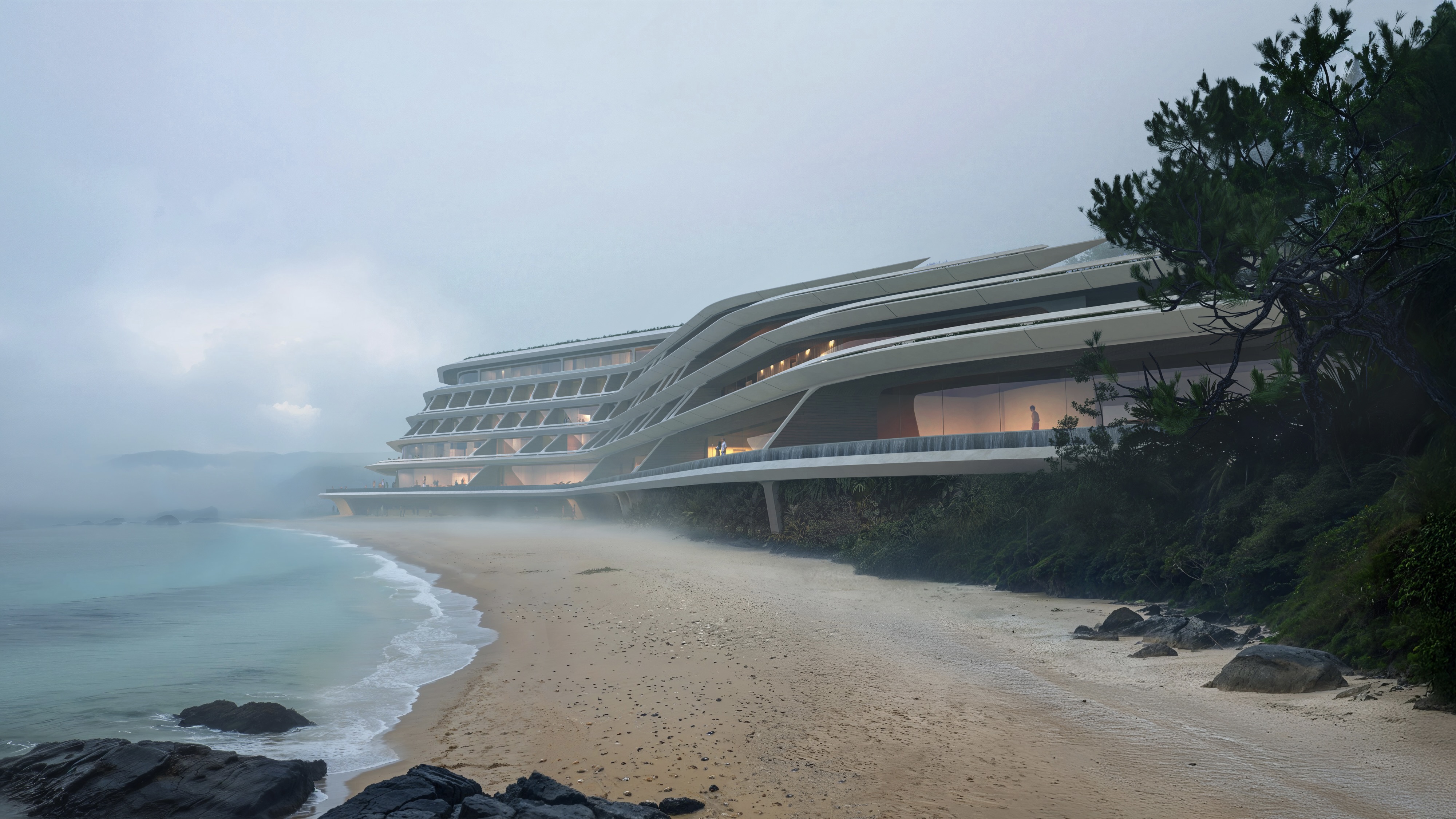 Curvilinear futurism meets subtropical beaches at Not A Hotel’s ZHA-designed Okinawa retreat
Curvilinear futurism meets subtropical beaches at Not A Hotel’s ZHA-designed Okinawa retreatZaha Hadid Architects has revealed the design for the first property in Not A Hotel’s futuristic new Vertex collection, coming soon to southern Japan
-
 Gorden Wagener leaves the helm of Mercedes-Benz design after 28 years with the company
Gorden Wagener leaves the helm of Mercedes-Benz design after 28 years with the companyThe German designer is stepping down from the role of chief design officer at Mercedes-Benz. We look back at his influence and impact on the world of automotive and luxury design
-
 Step inside this resilient, river-facing cabin for a life with ‘less stuff’
Step inside this resilient, river-facing cabin for a life with ‘less stuff’A tough little cabin designed by architects Wittman Estes, with a big view of the Pacific Northwest's Wenatchee River, is the perfect cosy retreat
-
 Remembering Robert A.M. Stern, an architect who discovered possibility in the past
Remembering Robert A.M. Stern, an architect who discovered possibility in the pastIt's easy to dismiss the late architect as a traditionalist. But Stern was, in fact, a design rebel whose buildings were as distinctly grand and buttoned-up as his chalk-striped suits
-
 Own an early John Lautner, perched in LA’s Echo Park hills
Own an early John Lautner, perched in LA’s Echo Park hillsThe restored and updated Jules Salkin Residence by John Lautner is a unique piece of Californian design heritage, an early private house by the Frank Lloyd Wright acolyte that points to his future iconic status
-
 The Stahl House – an icon of mid-century modernism – is for sale in Los Angeles
The Stahl House – an icon of mid-century modernism – is for sale in Los AngelesAfter 65 years in the hands of the same family, the home, also known as Case Study House #22, has been listed for $25 million
-
 Houston's Ismaili Centre is the most dazzling new building in America. Here's a look inside
Houston's Ismaili Centre is the most dazzling new building in America. Here's a look insideLondon-based architect Farshid Moussavi designed a new building open to all – and in the process, has created a gleaming new monument
-
 Frank Lloyd Wright’s Fountainhead will be opened to the public for the first time
Frank Lloyd Wright’s Fountainhead will be opened to the public for the first timeThe home, a defining example of the architect’s vision for American design, has been acquired by the Mississippi Museum of Art, which will open it to the public, giving visitors the chance to experience Frank Lloyd Wright’s genius firsthand
-
 Clad in terracotta, these new Williamsburg homes blend loft living and an organic feel
Clad in terracotta, these new Williamsburg homes blend loft living and an organic feelThe Williamsburg homes inside 103 Grand Street, designed by Brooklyn-based architects Of Possible, bring together elegant interiors and dramatic outdoor space in a slick, stacked volume
-
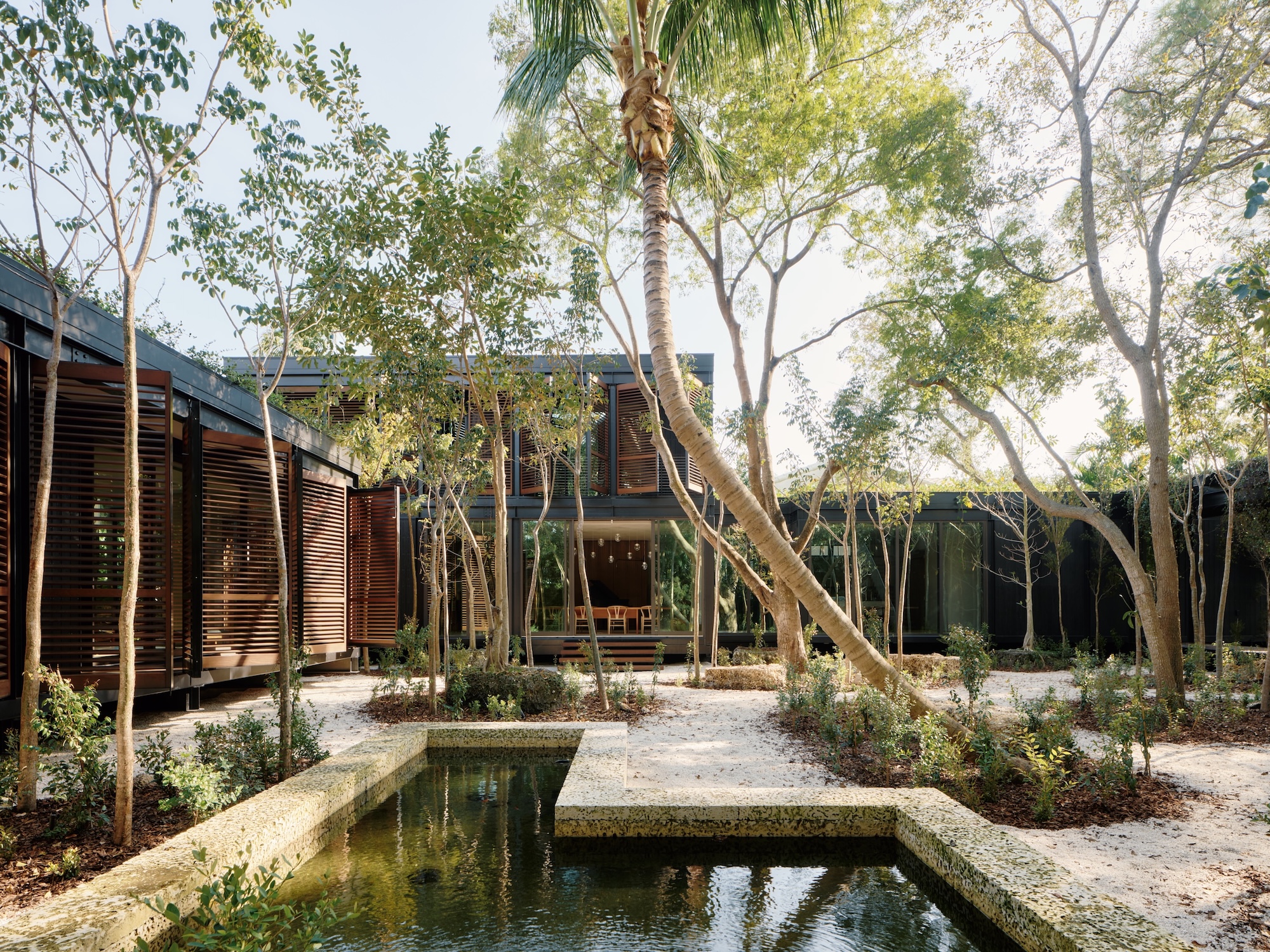 This ethereal Miami residence sprouted out of a wild, jungle-like garden
This ethereal Miami residence sprouted out of a wild, jungle-like gardenA Miami couple tapped local firm Brillhart Architecture to design them a house that merged Florida vernacular, Paul Rudolph and 'too many plants to count’